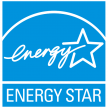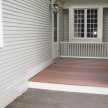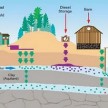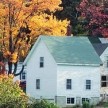Composting Basics
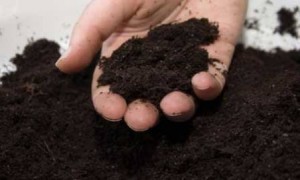 Composting
Composting
Using compost in your garden or plant beds can improve the soil structure, texture, and aeration. It also increases the soil’s water-holding capacity. Adding compost improves soil nutrients and stimulates healthy root development in plants.
What Are The Basics of Composting?
Composting is a natural process. Organic materials such as leaves, grass, and vegetable scraps are broken down by microorganisms, forming a rich soil-like substance called compost or humus.
A compost pile is really a microbial farm. Bacteria, the most effective composter, starts the process of decaying the food matter. Fungi and protozoans join in and later centipedes, millipedes, beetles and earthworms do their part. The result is a nutrient rich soil.
The more surface area the micro-organisms have to work on, the faster the materials are decomposed. Chopping your garden waster into small pieces will speed their composting. also a larger compost pile will insulate itself and hold the heat for microbial activity. Is center will be warmer than its edges.
Small piles, smaller than 27 cubic feet will have trouble holding its heat, while piles larger than 125 cubic feet will not allow air to reach the microbes at the center.
The hotter your compost pile is the faster it will decompose.
A good mix consists of three parts “browns” (materials such as dead leaves that are high in carbon) and one part “greens” (such as fresh grass clippings and garden pruning that are high in nitrogen). If your looking for a true organic compost you may not want to use grass clippings or even leaves that fall on a chemically fertilized lawn.
To prevent unpleasant odors that can occur when materials decompose without oxygen, turn your compost pile with a pitch fork regularly to ensure that air is reaching the center of the pile.
Benefits of Composting:
- Suppress plant diseases and pests.
- Reduce or eliminate the need for chemical fertilizers.
- Promote higher yields of agricultural crops.
- Facilitate reforestation, wetlands restoration, and habitat revitalization efforts by amending contaminated, compacted, and marginal soils.
- Cost-effectively re-mediate soils contaminated by hazardous waste.
- Remove solids, oil, grease, and heavy metals from storm water runoff.
- Capture and destroy 99.6 percent of industrial volatile organic chemicals (VOCs) in contaminated air.
- Provide cost savings of at least 50 percent over conventional soil, water, and air pollution remediation technologies, where applicable.
Items Safe to Compost:
- Animal manure
- Cardboard rolls
- Clean paper
- Coffee grounds and filters
- Cotton rags
- Dryer and vacuum cleaner lint
- Eggshells
- Fireplace ashes
- Fruits and vegetables
- Grass clippings
- Hair and fur
- Hay and straw
- Houseplants
- Leaves
- Nut shells
- Sawdust
- Shredded newspaper
- Tea bags
- Wood chips
- Wool rags
- Yard trimmings
Items NOT to Compost:
Leave Out/Reason Why
- Black walnut tree leaves or twigs
- Releases substances that might be harmful to plants
- Coal or charcoal ash
- Might contain substances harmful to plants
- Dairy products (e.g., butter, milk, sour cream, yogurt) and eggs
- Create odor problems and attract pests such as rodents and flies
- Diseased or insect-ridden plants
- Diseases or insects might survive and be transferred back to other plants
- Fats, grease, lard, or oils
- Create odor problems and attract pests such as rodents and flies
- Meat or fish bones and scraps
- Create odor problems and attract pests such as rodents and flies
- Pet wastes (e.g., dog or cat feces, soiled cat litter)
- Might contain parasites, bacteria, germs, pathogens, and viruses harmful to humans
- Yard trimmings treated with chemical pesticides
- Might kill beneficial composting organisms
source: EPA.gov
RELATED POSTS:
Bio-Org Tumbling Composter
Rain Barrel



